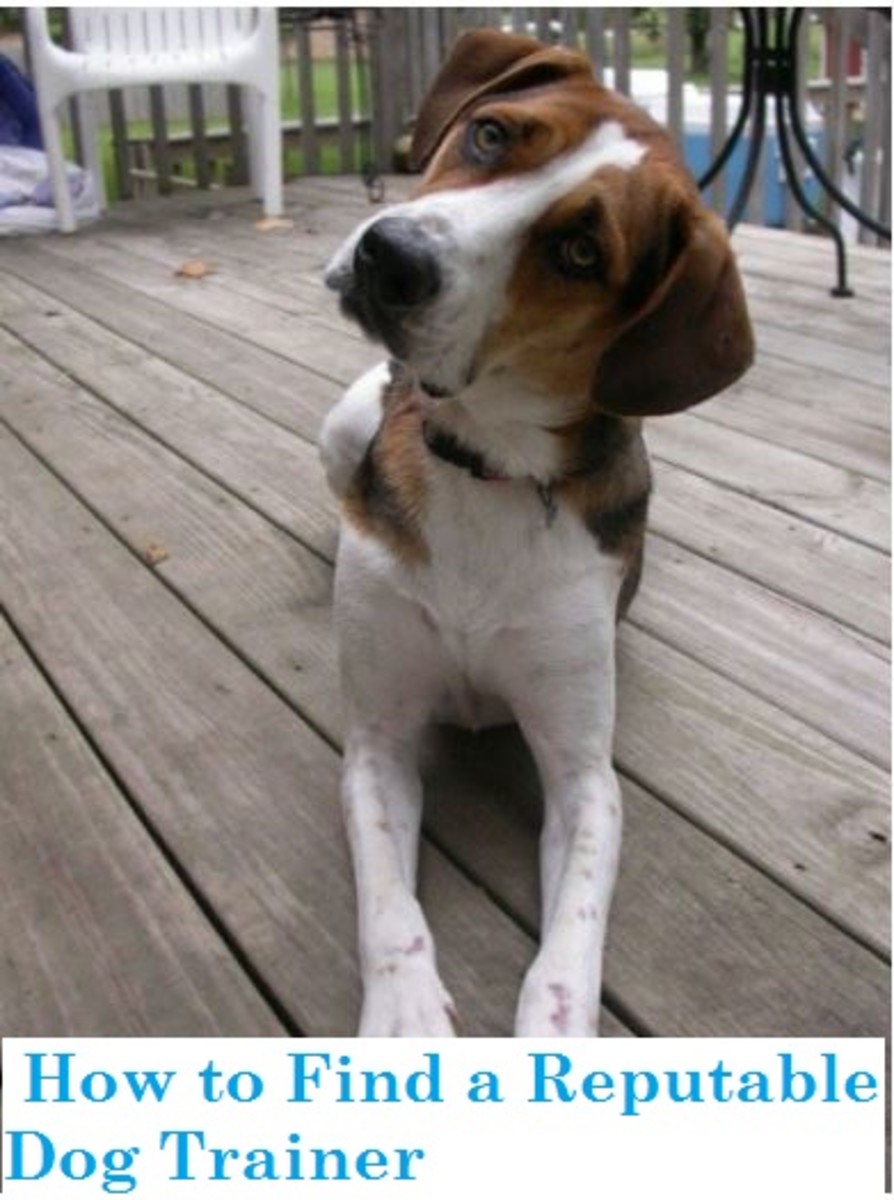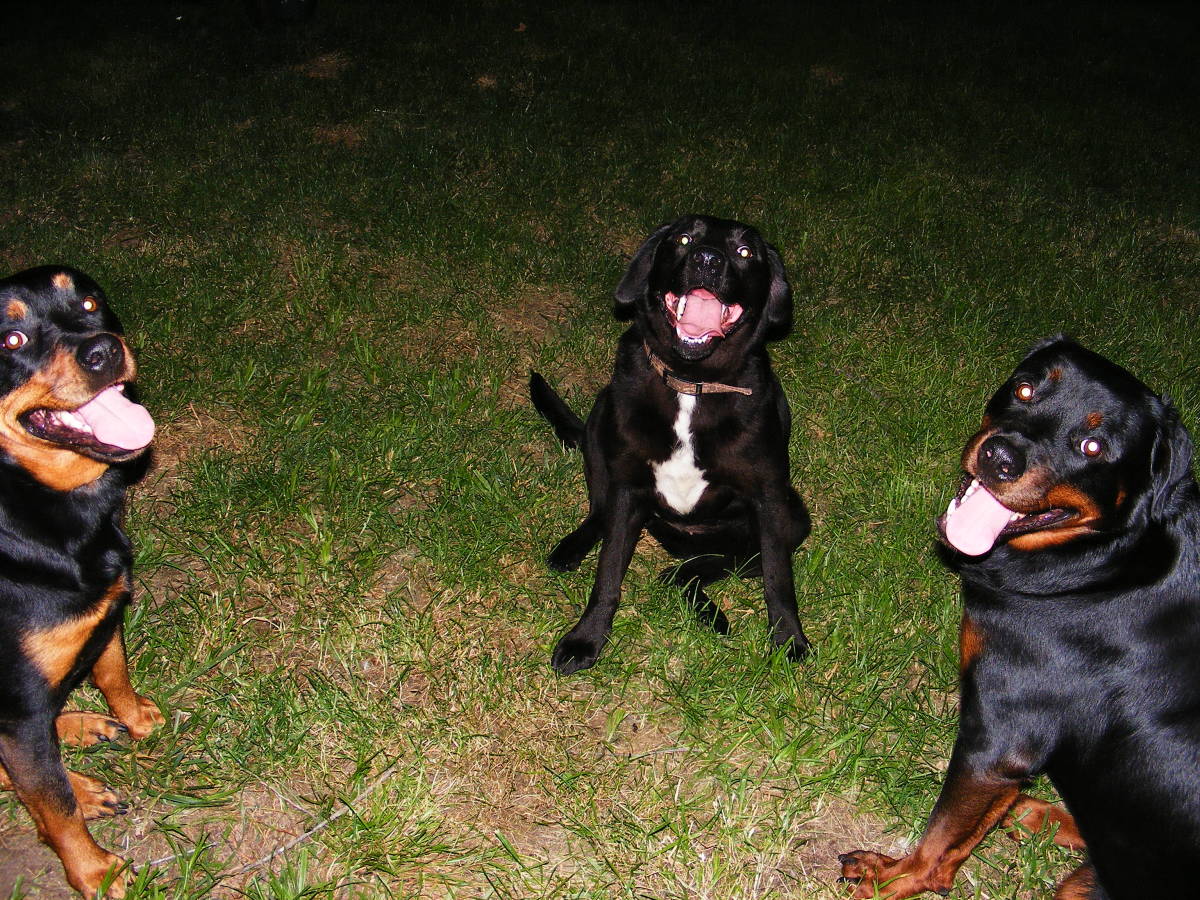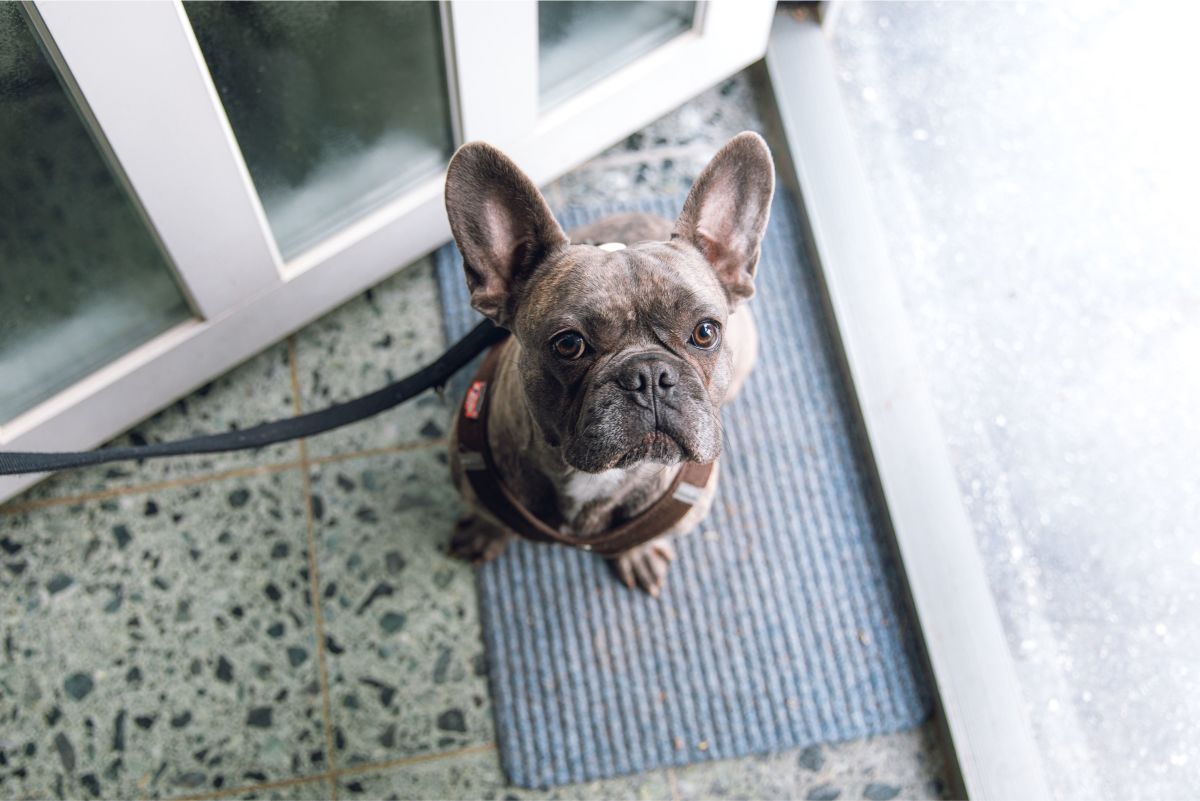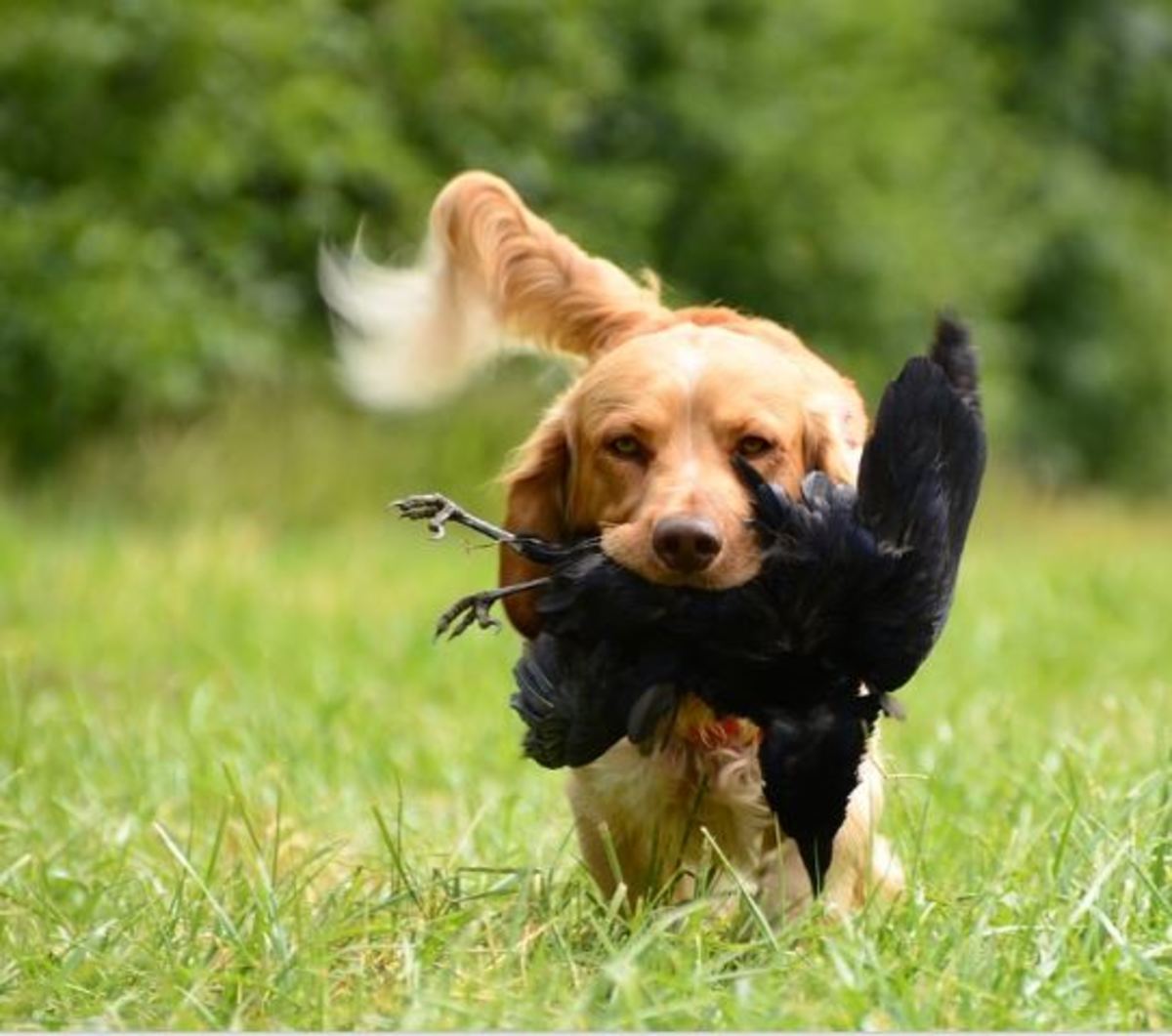Visualize What You Want, Then Teach the Dog
Behaviorial Visualization - What Do I Mean?
It's basically a fancy way for saying "picturing what you want before you start."
One thing I had to learn was how to recognize what the various behaviors even look like. For the expert and experienced trainers, this is probably something of a "duh" moment as you folks do this instinctively and automatically in all likelihood. But a newbie like me had to start from the very basics.
So the first thing I had to discover is - what the heck is a "front"? What is a "finish"? What (or where) exactly is "heel position"? Things like that.
This also has an application in shaping - which is my preferred way of training.
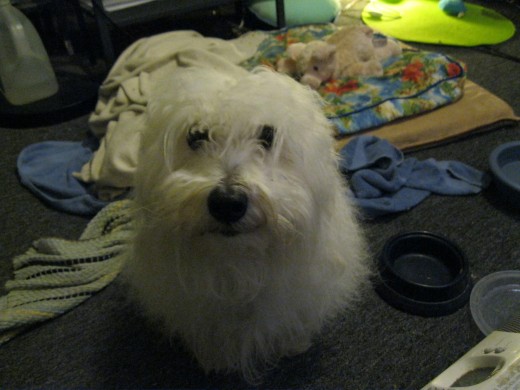
For Shapers - Another Step
Those of us who are shaping trainers, we have another step to consider - seeing that picture of a completed behavior - and then dissecting it.
Since shaping is all about taking a complete behavior and breaking it down into steps that are all taught individually and built towards the goal, this is necessary.
The way I had to do this was definitely by youtube at first. I'd watch a video over and over and over again. I'd pause it at points that looked interesting. Rewind it and watch a small loop. This let me key on different parts of the behavior (or chain) and see how I could start to break it down for Wally.
This is also important to know when you get the actual partial behavior. Let's say a piece of a behavior was getting the dog to paw a ball. How was the ball pawed? Did the dog smack it from the top? Bat it around? Which paw did he use or does it matter? What size was the ball? That could make a difference in getting the proper paw touch you want (a small ball might encourage the slap on the top while a big ball might encourage a paw push).
Of course, you also need to know in order to mark and reward the dog to let him know he did that action correctly. If you don't know, or have a clear/detailed idea - you might end up marking inconsistently and setting up trouble down the road.
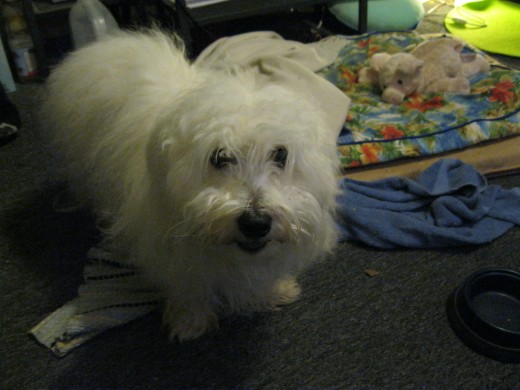
Finding External Pictures to Feed Your Inner Eye
Our brains are capable of image-oriented memory just like a dog's (the difference is that it's thought it's all dogs have is image-based memory) so seeing an image or a behavior being performed properly is a great way to see what a behavior should look like.
Find youtube videos, read training books and websites that have pictures (in fact, I would read them FOR the pictures), depending on the behavior, you could see other dogs on your regular day doing these things. Talk to other trainers who have completed these behaviors and ask them to describe what the dog should be doing as detailed as possible. Heck, even Google Images could have hidden treasures of information.
All of these things are good ways to develop your mental eye for various behaviors so you can get an idea of what the behavior should be like.
Make sure to get the full picture of what the trainer/handler is doing as well. You are a part of the training process as well as the environment from which the dog takes his cues and context. If an experienced handler is making a motion, chances are she is doing it for a good reason. Try to find out what that reason might be. How does the dog respond to the motion? Was it the cue for the behavior? What is the handler's position? Is the handler moving or stationary? Things like that can give subtle little clues that could make a difference in progressing.
Training - Turning My Pictures Into Wally's Reality
Really, the essence of my working with Wally is turning these pictures in my mind into his real world. It's my job to get what I have in my head into HIS head and then it will come out via his new behaviors.
Of course, we work that pretty much in the opposite direction, using behaviors to communicate what's in my head into his, but the concept holds true. In the end, he pictures himself doing the behaviors (based on what we know about dog memory) and then he is doing the same thing I had to, turning what's in his head into real world behavior. The better he grasps a behavior, the better refined that picture is. As trainers, we have our techniques to help the dog tweak that picture.
A Practical Example
A relatively simple practical example would be a formal retrieve. Yes, I had an idea of what a fetching dog would look like, not too hard to picture in the mind! However, I had no idea what a formal retrieve would look like, let alone the various behaviors involved.
Once I found some videos of it, I started looking closely at all the steps, watching it multiple times to get a full picture of what the behaviors looked like. I took a look at what the handlers were doing (or not doing) and how the dogs responded (did they perform a step, acquire a position, etc).
At that point, I noted the various major points in the behavior - for example, the dog didn't just chase the object when the handler threw it or how the dog came and sat directly in front of the handler and kept holding the object. Now with an idea, I knew what I was going for.
Thinking in Pictures is Thinking Like a Dog
It is thought that dogs remember things by "taking a picture" of what they were doing, where they were doing it, and who/what they were doing it with when they remember a behavior. We then assign "names" to this pictures and teach the dog the sound or body language that is to call up that picture. This is what we call cues or commands.
When dogs get behaviors confused, it may well be because these pictures get mixed up, or the "names" get confused and they look at their "sit picture" when we say "lie down" - and they end up sitting instead of lying down. This is especially a challenge for a dog since they work by body language and shape for the bulk of their communication and reading another creature (like a prey animal or a dog's body language - which is also a picture if you think about it since it is a visual image)
Thinking of behaviors in picture terms gives us a little insight of what it's like to think like a dog and the challenge they could be undergoing when we ask for behaviors or don't clarify the picture of what we actually want for them. It could look like a confusing drawing or a badly drawn map and trying to find the real information becomes too hard.
When cues get mixed up (or worse, poisoned) it's often better to throw that image away. We can do this by re-acquiring the behavior and giving it a new name. The dog can then visualize the successful behavior you've clearly defined and give it a new name. That name then calls up this clear image and the behavior can become much more reliable.
Thinking in images connects us closer to a dog's mind. Our human minds are aware of other things that a dog's mind isn't and that can get in the way. Thinking in just pictures makes us clarify to ourselves what we want without any extra "noise". We know it when we see it in reality because it matches what we already imagined before we began. This then let's us convey our image to the dog, via behaviors and clear training, who remembers it with his own imagery.
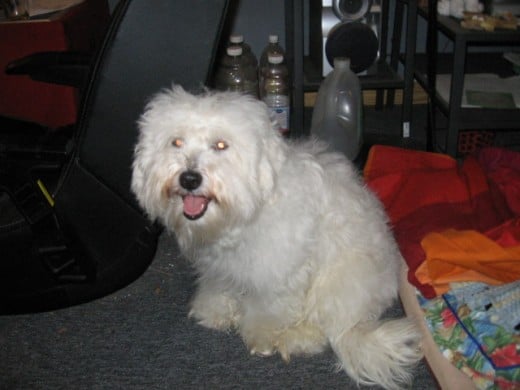
Links on Dog's Thinking And Memory
- The Intelligence of Canines as Proven by Border Collies
When Rico, a border collie from Germany, splashed across the news in 2004 scientists began to take a brand new look at the I.Q. of dogs.

